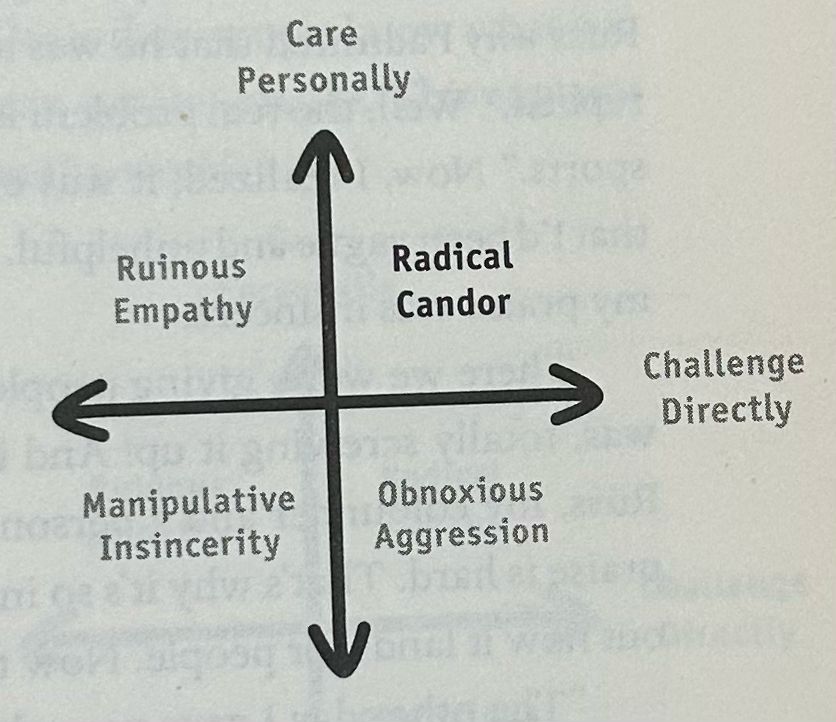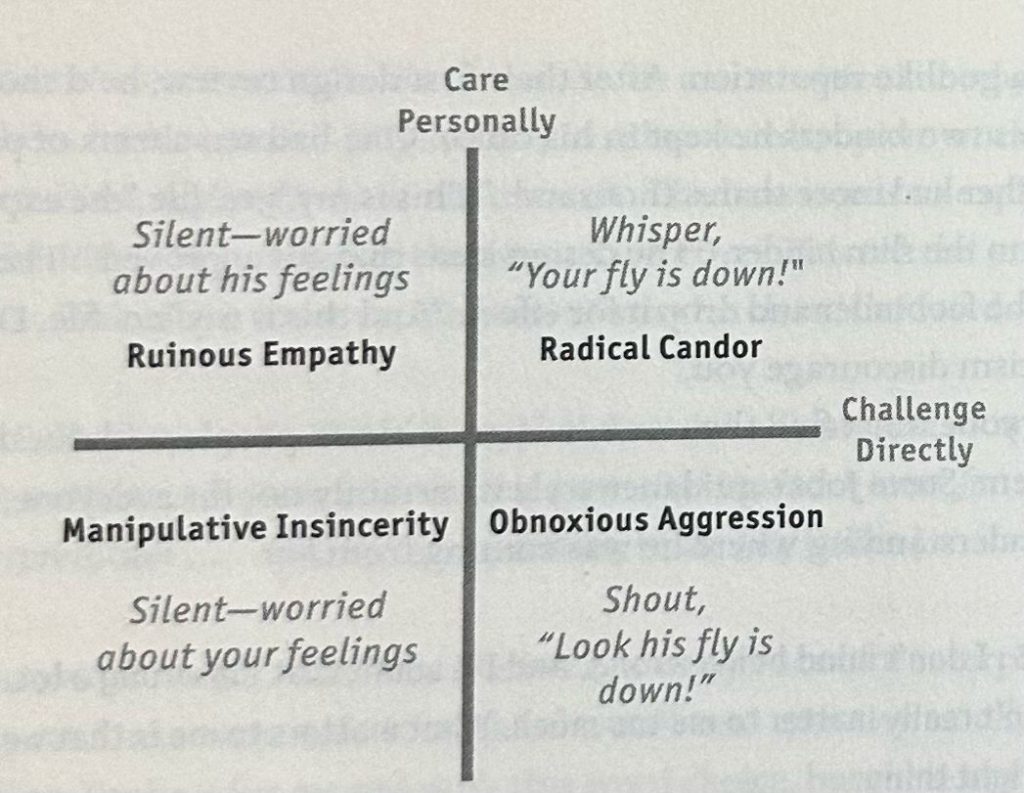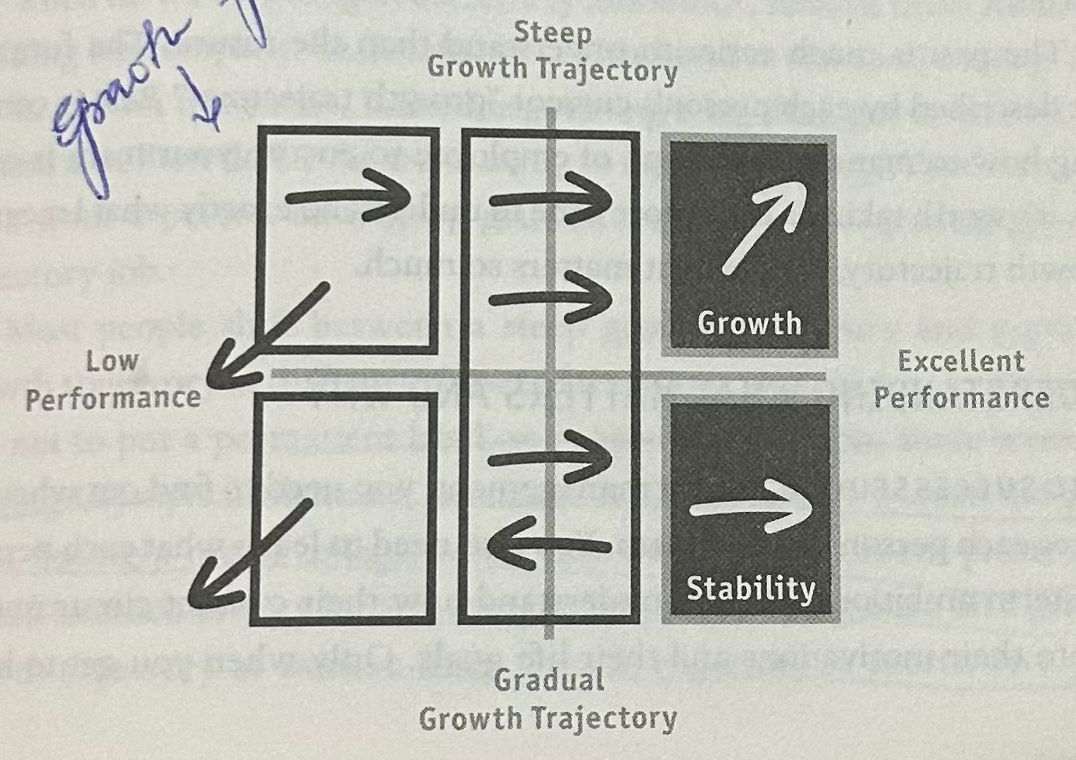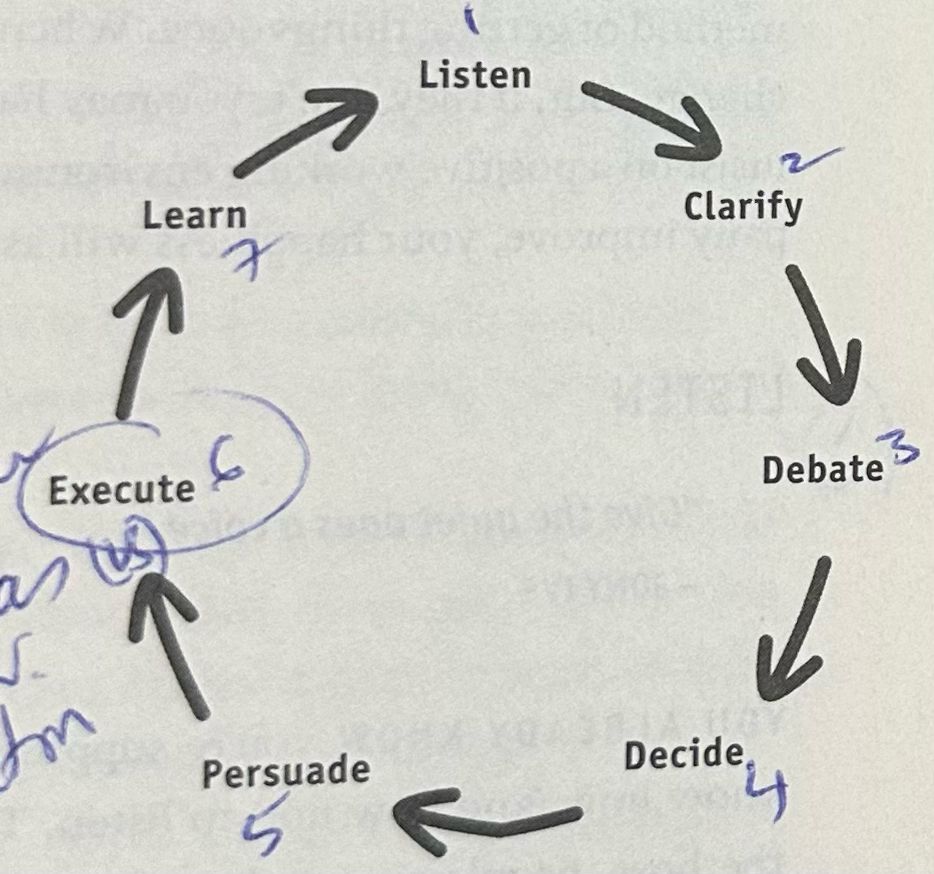book written from a manager POV


- Bosses guide a team to achieve results
- guidance: feedback
- team-building: figuring out right people for right roles – hiring, firing, promoting
- results: get things done
- Manager “Personally cares” & “Challenges team”
- Maintain personal relationship to show you care
- Bring your whole self to work
- Model by showing vulnerability to people who report to you
- Good working relationship is a personal one
- Challenge employees to meet and exceed expectations
- People who care actually challenge
- If performance is deteriorating, and manager refuses to be critical, then you are hurting the business too
- Provide guidance and criticism while coming across as useful and helpful
- Direct and honest doesn’t mean being mean and aggressive
- Show humility when giving and receiving feedback
- Even with overall success, complement and help improve
- Don’t wait to provide feedback
- Praise in public, criticize in private
- Formal performance reviews
- no surprises
- don’t rely on your unilateral judgement
- write it down
- schedule at least 50min, and don’t do back-to-back
- spend half time looking back, and half time looking forward
- Avoid manipulative insincerity – stems from manager being lazy, don’t care and not challenging
- Ruinous empathy – avoids conflict in the misplaced fear of hurting feelings
- In a perfect world – job would be fulfilling for which employees have passion, but in reality, jobs can be tedious
- Job with meaning and a noble purpose can inspire, but it’s not the job of the manager to create or manufacture the meaning and purpose
- Some jobs have only one reward – pay bills, solving employees’ existential dilemmas is not manager job
- Being radically candid means no sugar coating
- Rock Star
- steady growth
- steadier presence and will be great if given stability and time
- Super Star
- steep growth
- need to be challenged and permitted to grow quickly
- figure out who’ll replace them when they move on
- need mentorship
- Need both rock stars & super stars

- In order to distinguish between the two, must let go of any bias in favor of ambition
- Keep raising the bar, there is no B-player
- When assessing pas performance, it’s useful to consider both their results and more intangible things like “teamwork”
- Being fired is not boss’s choice
- Ensure employees are aware when someone is let go, a manager will need to keep the existing employee trust
- Fire for the right reasons
- make every effort to improve performance
- consider effect of bad employee on overall team
- ask for outside opinion if needed
- Common lies managers tell themselves to avoid firing someone that needs to be fired
- it will get better
- somebody is better than nobody
- transfer is the answer
- it’s bad for morale
- Collaborative leadership
- don’t tell employees what to do, bossing around is bad way to lead
- team should be able to speak-up
- listen to what people what to say, make it safe to speak minds
- give team time and space to develop ideas
- allow for healthy debate
- communicate the idea up the chain and then execute on it

- Two kinds of listening; practice what’s your personality
- Create a culture of listening
- Quite listening
- if you want honest opinions, then do this, don’t disturb
- Loud listening
- for leaders who are confrontational
- make a strong statement and push people to do the same
- shy employees will be drawn out of the shell
- respond positively so they continue to speak-up
- Clarify
- be clear in your own mind – create a safe space to nurture ideas
- be clear to others
- Debate
- keep conversations focused on ideas and not egos
- create a obligation to dissent
- use humor and fun
- don’t grab a decision since debate became painful
- Decide
- you are not the decider, people with best information should be
- Persuade
- demonstrate expertise and humility
- show your work
- Execute
- as the boss, part of your job is to take on a lot of the “collaboration tax” so team can spend time on execution
- don’t waste team time
- stay connected with the work, keep dirt under your fingernails
- Incentives drive behavior – managers should support dreams in realistic fashion
- Personally talk what aspirations are
- To understand dreams/aspirations, use of the 3 techniques
- Life story conversation – employee tells everything until today and manager tries to find motivation
- Dream job conversation – employee describes what’s the biggest career goal, then work backwards
- 18mo plan – look at immediate goal and do everything to stay on track
- Emphasize caring, listening, understanding and healthy debate to empower employees to make decisions
- Explain reasons behind directions
- Build a team that looks forward to coming to work
there are many good books on leadership and management and remembering an entire book is not possible. for each book I read, I make notes (cheat sheet) and catalog them here. not an editorial / opinion piece, but bullet point list of what’s in the book

